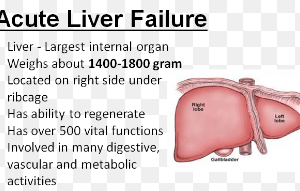
Congestive heart failure does not mean you cannot or should not exercise.
In fact, it’s just what the doctor ordered.
You should know what the best kind of exercise there is for your condition.
One might say that the best kind of exercise for heart failure patients is whatever kind of exercise they “enjoy.”
But expecting exercise to be enjoyable may be quite unrealistic for many CHF patients.
Nevertheless, you certainly don’t want to attempt to adhere to a type of activity that you dread, either.
You Can Learn from Rats
Research done on rats, who share quite a few proteins and genes with humans, shows that a particular kind of exercise is beneficial for the chronic heart failure patient.
The study was conducted at the University of Colorado at Boulder and demonstrated that exercise of a low intensity may very well delay significantly the onset of congestive heart failure in people.
The rats that were used in this research were specifically bred to suffer from spontaneous high blood pressure and congestive heart failure.
The rats’ life expectancy was boosted 10-15 percent. The conclusion is that exercise of a low intensity nature will be beneficial to people with early congestive heart failure, assuming that the rat study is applicable to people.
The study report appears in the November 2005 American Journal of Physiology — Heart and Circulatory Physiology.
Since then, however, differing views of what the ideal exercise is for men and women with long-standing heart failure have popped up.
You’ll want to discuss exercise options with your cardiologist rather than just settling for only dietary and pharmaceutical management of your disease.
Nevertheless, the study points out that onset delay of congestive heart failure in these genetically manipulated rats, via “moderate” or low intensity exercise, was achieved in the absence of lowering the animals’ blood pressure.
This is important because the majority of humans with early congestive heart failure have high blood pressure.
Another interesting element of the research was that early on, several rats died after their treadmill speed was jumped from 10 meters/minute to 17.5 meters/minute.
The speed was taken down to 14 meters/minute for the remainder of the investigation, and there were no additional deaths.
Early Heart Failure
The paper points out that for those with early disease, low intensity (also referred to as “moderate” in this study) exercise could delay the need for costly drugs — but that eventually the drugs would be needed.
Starting an Exercise Program

If you decide to use a treadmill, avoid the bad habit of continuously holding on. For momentary balance checks, DO hold on, but then once you’re re-steadied, swing your arms naturally. Otherwise you’ll be encouraging bad posture and inefficient walking. Credit: Shutterstock/This Is Me
Get going. Don’t make excuses. The housework you’ve been doing for years does not count.
Same with any activity you’ve been doing on the job or in the yard.
You need to add a variable — a new level of activity to your life.
You also need to accumulate more steps throughout your day — ANYTHING to be up and around on your feet more.
• March in place during TV commercial breaks.
• Buy a stationary bike and pedal while watching TV.
• Join a gym and take up strength training.
• Participate in low impact group fitness classes.
• Take up tai chi or yoga.
• Double the length of time you take to walk the dog.
• You may also want to seriously consider hiring a personal trainer.
 Lorra Garrick is a former personal trainer certified by the American Council on Exercise. At Bally Total Fitness she trained clients of all ages for fat loss, muscle building, fitness and improved health.
Lorra Garrick is a former personal trainer certified by the American Council on Exercise. At Bally Total Fitness she trained clients of all ages for fat loss, muscle building, fitness and improved health.
.


























